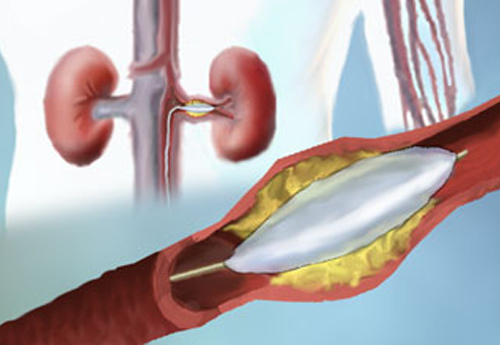Renal Angioplasty Stenting

A thin flexible tube called a catheter will be inserted into the artery and threaded through the arteries to the blockage. (Since there are no nerves in your arteries, you will not feel the catheter.) An x-ray camera and images of your arteries (shown on a television screen in the cath lab) will help the physician guide the catheter to the blockage. A tiny, thin wire will then be passed across the narrowed segment of the artery. It serves as a support for positioning the tiny balloon across the blockage.
Next, a balloon catheter – a long, thin flexible tube with a small uninflated balloon at its tip – will be threaded into the artery to where the artery is narrowed. Once in position, the balloon will be inflated to open up the artery.
Stent Placement
In most cases, a tiny metal-mesh tube called a stentwill be placed to hold the artery open and reduce the risk of the artery narrowing again. After the placement of the stent, your doctor will remove all of catheters.
After Your Procedure
Most patients with kidney (renal) artery disease who are treated with angioplasty and stenting are released from the hospital 12 to 24 hours after the catheter is removed. Many patients are able to return to work within a few days to a week after a procedure. If your interventional procedure included insertion of a stent, your interventional cardiologist or other vascular specialist will provide prescriptions for blood-thinning drugs, such as aspirin and clopidogrel, typically for a month to a year. It is very important that you follow your doctor’s instructions and take your medications as your doctor prescribed. Even after you begin to feel better, you should never stop taking your medications at any time without speaking with your interventional cardiologist.

